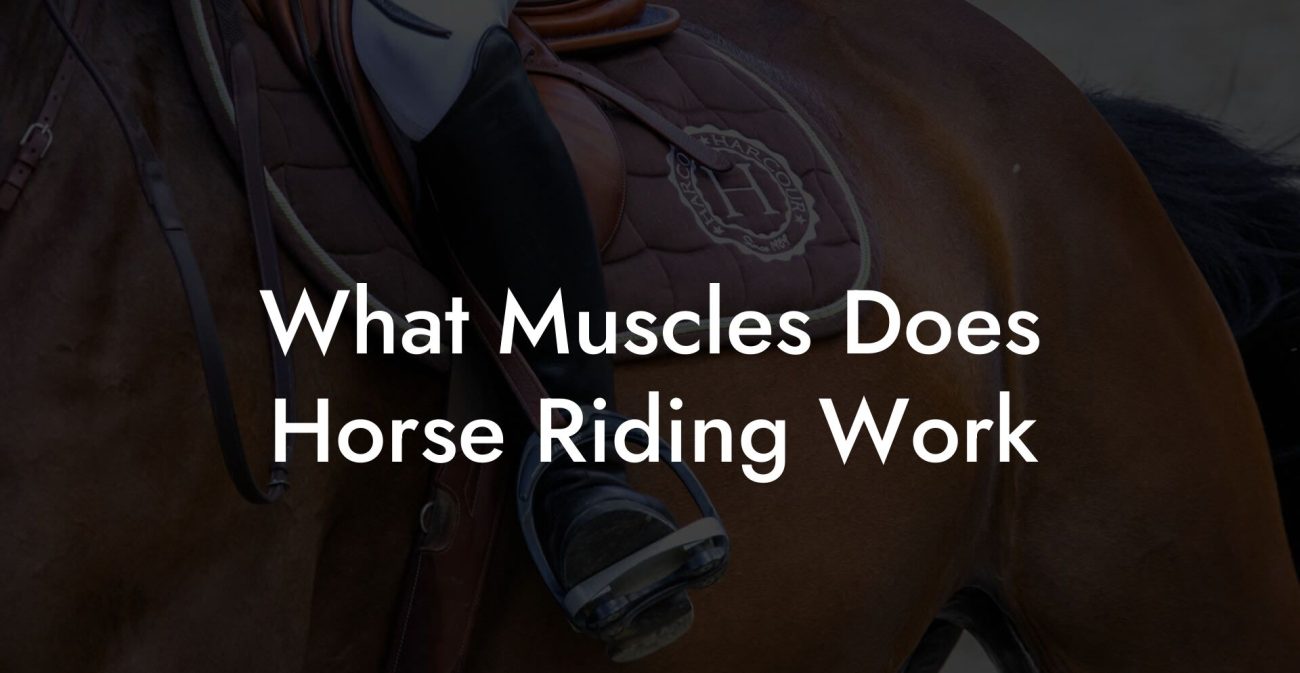Picture this: You’re in the middle of a breezy morning at your favorite equine retreat, coffee in hand, and you suddenly wonder, “How wide should a horse stall door be?” It might sound like a quirky question until you realize that the right stall door width isn't just about aesthetics, it’s about your horse’s comfort, safety, and the overall flow of daily barn life. In this deep-dive guide, we’re breaking down everything you need to know about horse stall door measurements, spilling the tea on equine safe design, and serving you real talk on optimizing stable functionality. Whether you’re a Gen-Z equestrian newbie or a millennial horse care enthusiast with a knack for DIY stable upgrades, sit back and let’s gallop through the world of stall door dimensions.
Quick Links to Useful Sections
- Understanding the Basics: Why Door Width Matters in a Horse Stall
- Key Considerations When Deciding on the Ideal Stall Door Width
- Practical Guidelines and Standard Measurements for Horse Stall Doors
- Standard Door Width Measurements
- Adjusting for Building Codes and Recommendations
- Incorporating Technology and Modern Materials
- Designing the Perfect Stall Door: Beyond Just Measurements
- Choosing the Right Type of Stall Door
- Material Selection and Durability
- Additional Design Features for Enhanced Utility
- Installation and Maintenance: Keeping Your Stall Door in Prime Condition
- Installation Best Practices
- Maintenance Must-Dos
- Safety, Functionality, and Aesthetic Harmony in Stable Door Design
- Prioritizing Equine Safety
- Functionality That Simplifies Daily Management
- Striking the Right Aesthetic Balance
- Planning Your Own Stall Door Project: DIY vs. Professional Installation
- The DIY Route
- Benefits of Professional Installation
- Innovative Trends in Equine Stable Design
- Smart Barn Technologies
- Eco-Friendly Materials
- Customizable Design Modules
- Integrating Horse Stall Door Measurements into Overall Barn Design
- Optimizing Traffic Flow
- Ventilation and Natural Light
- Coordinated Aesthetics
- Frequently Asked Questions About Horse Stall Door Width
- Resources and Community Support: Your Next Steps
- Your Path to a Safer, More Functional Equine Environment
Understanding the Basics: Why Door Width Matters in a Horse Stall
When it comes to designing a horse stable, every inch counts, and that includes the stall door. The width of a horse stall door isn’t a trivial measurement; it’s a strategic decision that affects how your horse moves, how easily you can handle them, and even how safely your equine friend navigates in and out of their stall. Unlike a modern shop door, a horse stall door must consider factors like the size of the animal, ease of access for grooming, veterinary inspections, and emergency evacuation procedures.
Think of it like choosing the perfect pair of sneakers. Too tight, and you’ll never get comfortable. Too loose, and you risk tripping over yourself. In equine terms, an inappropriately sized stall door could lead to injuries, nervous escapes, or frustrations during everyday handling. It’s not just a door, it’s a gateway to a harmonious barn environment.
In this section, we’ll cover the fundamentals of horse stall door dimensions, why the width matters, and how even small tweaks can contribute significantly to the safety and ease of stall management.
Key Considerations When Deciding on the Ideal Stall Door Width
There isn’t a one-size-fits-all answer, and your decision should factor in several critical elements. Here’s what to keep in mind:
- Horse Size and Build: The size, breed, and build of your horse are pivotal. A draft horse will require a wider opening than a nimble pony. You need space that lets them comfortably step through without squeezing their bulky frame or delicate limbs.
- Ease of Access: Think about the day-to-day routines, grooming, feeding, cleaning, and handling emergencies. A door that’s too narrow complicates these basic tasks, making maintenance a stressful affair for both you and your horse.
- Safety and Emergency Egress: In case of an emergency, every second counts. A wider door provides a clear, unhindered exit, minimizing the risk of your horse panicking or getting trapped. This is a critical aspect often overlooked until the unexpected happens.
- Comfort and Behavioral Considerations: Just like us, horses appreciate room to move. A stall that feels cramped can contribute to anxiety and behavioral issues. The equilibrium between spaciousness and security is vital.
- Functional Design: Beyond measurements, the stability of hinges, type of latch, and additional design features like sliding versus swinging doors also impact overall usability. Each of these factors can subtly influence how wide the door should be.
- Environmental Influences: Consider the barn’s layout, the positioning of stalls, and even climate elements like prevailing winds or harsh sunlight that might affect the door’s operation.
By thoroughly assessing these considerations, you not only refine your measurement strategy but also ensure a harmonious balance between functionality and comfort for your horse.
Practical Guidelines and Standard Measurements for Horse Stall Doors
Although individual needs vary, several practical guidelines have emerged over the years that serve as a standard for many horse barn designs. Let’s break down these insights:
Standard Door Width Measurements
Traditionally, stall door widths are typically recommended to range between 40 inches and 60 inches. However, note that these are not rigid rules. For most average-sized horses:
- Small to Medium Breeds: Stall doors between 40 to 48 inches often suffice. These dimensions provide ample room for shrink-wrapped miniature or small breed horses without compromising on safety.
- Larger or Draft Breeds: For animals with larger builds or heavier frames, door widths from 50 to 60 inches are advisable. Draft horses, for instance, need that extra space to comfortably navigate their enclosure.
When considering the appropriate measurement, always add a little extra clearance to allow for stirrup placement if needed, and make sure the door’s swing or slide mechanism doesn’t impede a horse’s natural movement.
Adjusting for Building Codes and Recommendations
Many local building codes and safety standards provide guidelines specifically for equine facilities. Some regions may have regulations that require a minimum stall door width depending on the type of stable operation, whether it’s used for competitive riding, breeding, or general boarding. Always check with your local agricultural extension office or building regulatory body to ensure your design complies with legal safety requirements.
For many modern equine facilities, designers are opting for adjustable stall doors that cater to various sizes and needs. These are particularly popular in barns where multiple horse sizes share the same space, ensuring that each animal has the appropriate access without requiring multiple door types.
Incorporating Technology and Modern Materials
With advances in construction materials and smart technology, you can now integrate sensor-based door systems that monitor usage, gauge ambient conditions, and even alert you if the door isn’t securely latched. High-strength, lightweight materials simplify the process of constructing wider doors without sacrificing durability or safety.
Modern stable designs might also feature energy-efficient insulated doors that not only meet the width requirements but also help maintain barn temperature, keeping your horse cozy during winter months and cool during the heat of summer.
Designing the Perfect Stall Door: Beyond Just Measurements
While dimensions are a critical aspect, a perfect stall door is more than just its width. It’s about the intersection of aesthetics, performance, and the well-being of your horse. Here, we delve into the many facets that contribute to a superior stall door design.
Choosing the Right Type of Stall Door
Stall doors come primarily in two forms: swinging and sliding. Each has its own set of advantages:
- Swinging Doors: These are traditional, easy to install, and offer quick access when open. However, they require ample room for the door to swing open fully, so the design must account for the extra clearance space beyond the door’s width.
- Sliding Doors: Ideal for barn layouts with limited external space, sliding doors offer a streamlined design. Their operation requires a stable track system but can be more forgiving in tight layouts since they do not protrude when open.
Your choice will largely depend on your stable’s configuration and the typical flow of activity in your facility. If your barn space is tight or if you have horses that respond better to steady, non-swinging movements, a sliding door might be the way to go.
Material Selection and Durability
The material of your stall door significantly affects its longevity and ease of maintenance. Here are a few popular choices:
- Wood: Traditional and robust, wooden stall doors offer natural insulation and an attractive aesthetic. However, they require regular maintenance, especially in climates with high humidity or extreme temperature fluctuations.
- Metal: Steel or aluminum doors are durable, resistant to wear and tear, and can be engineered to meet precise width specifications. They’re often used in commercial stables and high-traffic facilities.
- Composite Materials: These innovative options combine the best of both worlds, strength, lightweight design, and minimal maintenance. Composite doors can be custom-built to any width and are increasingly popular in modern equine facilities.
Whatever material you choose, ensure it has the necessary structural integrity to withstand the daily rigors of barn life, and the occasional enthusiastic kick from an oversized horse.
Additional Design Features for Enhanced Utility
Beyond structural components, think about extra features that may enhance the practical use of your stall door:
- Windows or Vision Panels: Adding small sections of durable, shatter-resistant glass or polycarbonate panels can help you keep an eye on your horse’s mood, check their reactions when the door is open, and maintain adequate ventilation.
- Safety Locks and Latches: Incorporate secure locking mechanisms that are easy for you to operate but foolproof enough to keep curious horses from accidentally unlatching the door.
- Insulation and Weatherproofing: If you live in a region with substantial weather changes, consider weatherproof seals around the door’s perimeter to protect against drafts and moisture intrusion, ensuring your horse’s stall remains a comfortable haven in every season.
- Aesthetic Enhancements: A well-designed door can complement the overall appearance of your barn. Whether you opt for custom paintwork, enhanced trim, or decorative metalwork, the aesthetics of the door should echo the style of your facility while not compromising the function.
The ultimate goal is to craft a stall door that embodies both form and function, a door that welcomes your horse, facilitates smooth daily operations, and stands resilient against the test of time.
Installation and Maintenance: Keeping Your Stall Door in Prime Condition
Even the perfectly designed stall door requires regular upkeep to maintain its performance. Let’s talk about what goes into installing and keeping your door in top shape:
Installation Best Practices
The first step in ensuring your door remains functional is proper installation. Here are some tips:
- Use Quality Hardware: Invest in high-quality hinges, latches, and door handles designed for heavy use. Cheap hardware can deteriorate quickly under constant stress.
- Ensure Precise Measurements: During installation, recheck measurements to ensure the door fits smoothly within the frame without binding or excessive slack. A smooth swing or slide is critical for day-to-day use.
- Professional Assistance: If you’re unsure about any aspect of the installation, consult with a professional. Proper alignment and secure fastening can make all the difference in durability and safety.
Maintenance Must-Dos
Regular maintenance enhances the lifespan of your stall door and prevents injuries. Consider these routine check-ups:
- Monthly Inspections: Check for rust, wear on hinges, and integrity of safety locks. Replace any compromised parts immediately.
- Seasonal Overhauls: Depending on the climate, a seasonal maintenance routine can help protect against moisture, temperature fluctuations, and pest damage. Sand down rough wood surfaces, repaint metal parts, or realign any shifting components as needed.
- Lubrication: Regularly lubricate moving parts like hinges and sliding tracks to ensure smooth operation and reduce wear.
- Cleaning: Keep the door and surrounding area free from dust, debris, and moisture to mitigate corrosion or buildup that might impede functionality.
A well-maintained stall door not only contributes to a safer environment but also reduces repair costs over time and minimizes disruptions to your daily routine.
Safety, Functionality, and Aesthetic Harmony in Stable Door Design
Beyond physical dimensions and material quality, the overall design philosophy of your stall door should reflect a harmonious blend of safety, functionality, and aesthetics. This holistic approach ensures that each door not only serves as a practical gateway but also as an integral element of your barn’s atmosphere.
Prioritizing Equine Safety
Safety is paramount for any equine facility. A stall door must be engineered to handle both routine operations and unexpected situations. Think about these safety enhancement ideas:
- Emergency Release Mechanisms: Consider installing dual-lock systems or quick-release latches that allow rapid egress in the event of a fire or other emergencies.
- Rounded Edges and Smooth Surfaces: Sharp edges and protrusions can injure your horse in moments of panic. Rounded edges and a smooth design mitigate these risks.
- Visibility and Ventilation: Incorporating vision panels and ventilation grills not only improves air circulation but also helps monitors the stall without the need for constant physical contact, reducing stress on the animal.
Functionality That Simplifies Daily Management
Functionality goes hand in hand with safety. A well-designed stall door enhances the efficiency of daily chores such as cleaning, feeding, and routine inspections. Features such as adjustable panel sizes, repositionable hardware, or even partial automation (think sensor-activated doors) can greatly elevate the ease of barn management.
Striking the Right Aesthetic Balance
After all, a barn isn’t just a functional building, it’s a space that reflects care, passion, and style. Whether you lean toward a rustic charm with weathered wood or a modern aesthetic with sleek metal finishes, ensure that the design of your stall door complements the overall ambiance of your stable. A cohesive aesthetic not only enhances your personal satisfaction but can also improve the overall mood of the environment for both horses and handlers alike.
Planning Your Own Stall Door Project: DIY vs. Professional Installation
When it comes to executing the perfect stall door plan, you’re faced with a common dilemma: Do you roll up your sleeves for a DIY project, or do you bring in the pros? Both approaches have unique benefits and challenges.
The DIY Route
For the hands-on equestrian, a DIY stall door project can be incredibly rewarding. It gives you the opportunity to:
- Customize Every Detail: From the width and materials to the style and finish, you have full creative control. This is particularly appealing if you have a specific vision or if your barn requires a non-standard design.
- Cost Savings: By doing it yourself, you may save on labor costs. However, factor in the expense of tools, supplies, and any necessary permits or inspections.
- Learning Experience: Building your own stall door can lead to a deeper connection with your stable environment and a better understanding of equine facility management.
If you choose to DIY, be sure to research extensively, follow detailed plans, and consult online communities of fellow equestrians and home builders for support and troubleshooting.
Benefits of Professional Installation
On the flip side, hiring a professional can ensure that your stall door is installed with precision and durability in mind. Professionals bring:
- Expertise in Equine Facility Design: A professional builder familiar with barn construction will understand the nuances of stall door width and stability, ensuring compliance with safety standards and building codes.
- Time Efficiency: Professional installation reduces downtime. This can be particularly essential in commercial stables where downtime translates to disrupted operations.
- Long-Term Reliability: With proper installation comes fewer maintenance issues over time, ensuring that your investment in a high-quality stall door pays dividends in safety and performance.
Ultimately, the choice between DIY and professional installation rests on your comfort level, available resources, and the specific requirements of your stable. Whichever path you take, prioritize precision and safety to ensure your horse gets the best possible experience.
Innovative Trends in Equine Stable Design
As with any field, stable design is evolving, and equine architects and designers are always on the lookout for ways to enhance the experience for both horses and their caretakers. Here’s what you need to know about some of the latest trends in stall door design and overall stable functionality:
Smart Barn Technologies
Integrated sensors and automated systems are finding their way into modern barns. Imagine a stall door that automatically adjusts its position based on temperature, humidity, or even the proximity of your horse. Smart systems can send alerts to your phone if a door isn’t closing properly, ensuring proactive maintenance and increased safety.
Eco-Friendly Materials
Sustainability matters as much in horse care as it does in any other industry. Eco-friendly, recycled materials are becoming more popular for constructing stable doors and other facilities within the barn. These materials not only help reduce your carbon footprint but also often provide superior durability and insulation.
Customizable Design Modules
Rather than settling for one fixed dimension, many modern barns are incorporating modular designs. This flexibility allows for reconfiguration of stalls as your herd evolves or as your needs change over time. Custom modules can be fine-tuned, ensuring that stall door widths and overall barn layout remain optimal for both current and future equine care requirements.
Staying ahead of the curve by incorporating these trends can set your barn apart, creating not only a safer environment but also one that is efficient and visually inspiring.
Integrating Horse Stall Door Measurements into Overall Barn Design
The width of your horse stall door is a crucial piece of the larger barn design puzzle. When integrated into an overall blueprint that takes into account traffic flow, ventilation, lighting, and even color schemes, the door becomes both a functional component and an aesthetic focal point.
Optimizing Traffic Flow
A wide, well-placed stall door ensures that horses can move in and out of their stalls smoothly, reducing stress during peak times such as feeding or turnout. Optimizing your barn’s layout by strategically placing wider doors in high-traffic areas can reduce bottlenecks and promote a calm environment.
Ventilation and Natural Light
Incorporating windows or transparent panels in stall doors is a design strategy that enhances ventilation and brings in natural light. This not only keeps the air fresh but also provides your horse with a more pleasant and stimulating environment.
Coordinated Aesthetics
The stall door sets the tone for the barn’s overall appearance. Coordinating door designs with barn walls, roofing, and other structural elements creates a cohesive look that can boost morale and even impress visiting clients or competitors. Whether your style is modern industrial or charming rustic, the right design choices can integrate seamlessly into your barn’s personality.
Frequently Asked Questions About Horse Stall Door Width
Below are some of the most common questions we hear from fellow equestrians, along with the answers that’ll help you nail down that perfect door measurement:
1. How wide should a horse stall door be for an average-sized horse?
Most experts recommend a door width between 40 and 48 inches for an average-sized horse. However, adjustments may be needed depending on the horse's build and any specific handling requirements.
2. What factors influence the ideal width of a stall door?
Key factors include the horse’s size and build, ease of access for grooming and feeding, safety considerations during emergencies, the overall stall design, and nuances of the door’s construction and operation (swinging vs. sliding).
3. Are there building codes that dictate stall door dimensions?
Many local and agricultural building codes have guidelines regarding stall door widths. Always check with your local building authority to ensure your design complies with required safety standards.
4. Can I adjust the door width after installation?
While retrofitting is possible, it’s best to get the measurements right during the planning phase. Altering the door width afterward can be complex and may compromise the integrity of the stall.
5. How do environmental factors like weather affect stall door design?
Weather influences material choice and insulation requirements. In extreme climates, consider weatherproof seals and insulated materials, ensuring that your door remains functional and secure regardless of external conditions.
6. Is a wider door always better?
Not necessarily, a door that is too wide can leave gaps that may compromise the stall’s secure feel. Balance is key; opt for a width that allows normal movement without causing drafts or exposing the horse to injury risks.
7. What are the considerations for sliding vs. swinging stall doors?
Sliding doors are ideal for limited space outside the stall as they do not swing out, while swinging doors offer quicker access when space permits. The choice depends on your barn’s layout and specific needs.
Resources and Community Support: Your Next Steps
Venturing into stall door design and stable renovations can feel daunting, but you're not in it alone. Countless resources, from online forums to local equine associations, can offer practical advice, detailed blueprints, and professional contacts to guide your project. Here are some next steps to keep that momentum rolling:
- Join Equestrian Forums and Social Media Groups: Engage with a community of horse lovers who have tackled the same design challenges. Platforms like Reddit, Facebook groups, and specialized equine forums are treasure troves of DIY tips, vendor recommendations, and troubleshooting advice.
- Consult Professional Barn Designers: If you’re planning a major overhaul or a new build, meeting with a barn architect or designer can provide customized insights that cater to your specific layout and horse needs.
- Check Out Local Workshops and Seminars: Many agricultural extension services and equine centers offer workshops on barn safety, design trends, and maintenance best practices. These educational opportunities can greatly enhance your knowledge base.
- Read Up on the Latest Equine Facility Innovations: Trade magazines, online blogs, and industry conferences often spotlight cutting-edge developments in barn design, from eco-friendly materials to smart technology integration.
- Consult Building Codes and Local Regulations: Ensure that your stable design complies with local safety guidelines. Your local agricultural extension office or building department can be invaluable in this aspect.
Taking these steps not only guarantees that you’re well-informed but also connects you with a network of like-minded individuals passionate about equine care and stable optimization. Your journey towards creating a safe, efficient, and stylish barn begins with one step, stepping into a community that’s eager to share, support, and grow together.
Your Path to a Safer, More Functional Equine Environment
At the end of the day, determining the right width for a horse stall door is about creating a space that prioritizes your horse’s well-being while streamlining everyday barn life. From detailed measurements and material choices to smart technology integration and community support, every element contributes to a stable that is safe, efficient, and visually inspiring.
Whether you’re reinventing an aging barn, building a new facility, or simply tweaking your current setup for enhanced usability, the task starts with precise planning and informed decisions. Every dimension, feature, and design element should echo your commitment to equine care and your unique style.
Embrace the opportunity to innovate and personalize your stable design. By paying close attention to stall door width and all the supporting factors, you’re not merely constructing a physical entrance, it’s a gateway that elevates the everyday experiences of your trusted companion. Step into a future of smarter, safer, and more stylish barn design that celebrates the bond between you and your horse.
Your journey to an optimized equine environment is filled with learning, experimentation, and endless creativity. With careful planning and the insights shared here, you’re well on your way to achieving a barn setup that’s as functional as it is fabulous. Let this guide be the compass that navigates you through every twist and turn of your stable design adventure.
Now, gallop into your project with confidence, each step you take towards a better-designed stall door is a stride toward enhanced safety, ease, and unparalleled equine comfort.













